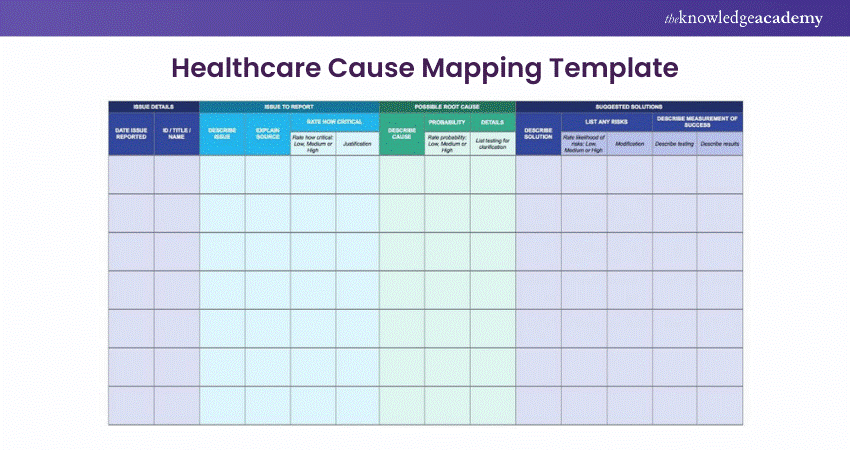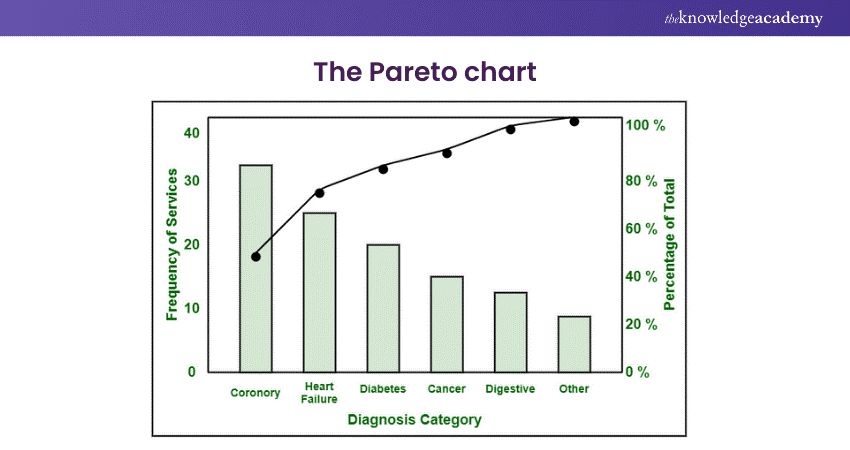We may not have the course you’re looking for. If you enquire or give us a call on +971 8000311193 and speak to our training experts, we may still be able to help with your training requirements.
Training Outcomes Within Your Budget!
We ensure quality, budget-alignment, and timely delivery by our expert instructors.

Problems are part and parcel of both personal and professional settings. They often persist like stubborn puzzles, leaving us fumbling for a solution. If you are in a similar bind, look no further than Root Cause Analysis Templates. RCA Templates are blueprints for diving deep into the heart of a problem, connecting the relevant dots, and solving issues from the ground up.
Root Cause Analysis Templates come in various forms tailored to diverse industry needs and problem-solving methodologies. This blog assembles some of the most popular RCA Templates and explores how they transform chaotic challenges into clear-cut solutions, saving you time, energy, and endless frustration. Read on and put your recurring problems to rest!
Table of Contents
1) What is a Root Cause Analysis Template?
2) Why Use a Root Cause Analysis Template?
3) What Form Does a Root Cause Analysis Template Take?
4) Root Cause Analysis Templates
5) Conclusion
What is a Root Cause Analysis Template?
A Root Cause Analysis Template is a document that is crucial in helping cross-functional teams identify the root cause of a problem and implement lasting solutions. It documents the steps undertaken to pinpoint the problem, unveil the cause, and describe how you plan to deal with the issue and prevent it from occurring again. RCA Templates can include diagrams to illustrate cause-and-effect relationships, underscoring their significance.
Why Use a Root Cause Analysis Template?
Understanding the root cause of a problem is crucial, especially when it recurs. While a quick fix might seem appealing in a fast-paced environment, a Root Cause Analysis can unravel complex issues and prevent their reoccurrence, saving time and resources. These templates further streamline this process, making it more efficient and collaborative. The main reasons to use RCA Template are:
1) Build Trust: Problems can appear differently for each team member, depending on their role in the company. Focusing on why a problem occurred rather than who was at fault helps build trust and ensures the entire team takes responsibility for resolving issues.
2) Identify Problems: Creating a comprehensive problem statement involves asking 'Why?' multiple times. This approach ensures a thorough analysis of the problem, its causes, contributing factors, and conditions. By asking 'Why?' at least five times, the team can examine the problem from every angle, leading to more effective and actionable solutions.
3) Propose Actionable Solutions: Brainstorming ideas is important for the team to generate multiple solutions and offer actionable suggestions. When the team agrees on a solution, document how to implement it and who will take responsibility, discuss potential roadblocks, and estimate a timeline for resolving the problem.
What Form Does a Root Cause Analysis Template Take?
A Root Cause Analysis Template (RCAT) is simpler than it sounds – it’s accessible even to those without a business background. Typically, an RCAT follows this straightforward format:
a) A detailed description of the event
b) Series of past events to understand the ultimate cause of the problem
c) The team involved in the investigation of Root Cause Analysis
d) A detailed overview of the employed methods
Root Cause Analysis Templates
Root Cause Analysis Templates are of various types, each designed to suit different problem-solving methodologies and industries. Here are some of those common types:
Simple Root Cause Analysis Template
This is the most stripped-down version of a Root Cause Analysis template. You can use this template to examine more straightforward issues that don’t require detailed analysis. It allows you to document a short explanation of the issue, list potential root causes and possible solutions, and report whether those solutions were successful.
Six Sigma DMAIC Methodology
This Template aligns with the Define, Measure, Analyse, Implement, Control (DMAIC) approach used in the Six Sigma methodology. It guides users through the five stages of the DMAIC process, providing a structured framework to identify Root Causes and implement improvement strategies. By following this Template, organisations can achieve process optimisation and enhance overall quality.
Take your career to new heights – join our ITIL Training today!
'5 whys'
The '5 whys' Template is an effective and simple tool for uncovering Root Causes. It involves repeatedly asking "Why?" to dive deeper into the factors contributing to a problem. By identifying the Five Whys in Root Cause Analysis, users can address the fundamental issues rather than merely treating symptoms.

Cause Mapping Template
Cause mapping Templates employ a visual approach to identify causes and their relationships. They utilise diagrams or flowcharts to map out cause-and-effect relationships, helping users understand the complex interdependencies involved in a problem. By visualising the causes, organisations can gain a comprehensive overview and identify critical areas for intervention.

Healthcare Cause Mapping Template
Specifically designed for the healthcare industry, these Templates focus on the following:
a) Identifying Root Causes of incidents or errors in healthcare settings
b) Incorporate industry-specific factors and considerations, such as patient safety, clinical protocols, and regulatory compliance.

By doing so, healthcare cause mapping Templates aid in improving patient outcomes, reducing different medical errors, and enhancing the overall quality of care.
Take your IT Service Management knowledge to the next level with our comprehensive ITIL® Certification Training.
Excel-based Root Cause Analysis Templates
Excel-based Templates provide a flexible and customisable approach to Root Cause Analysis. Users can create their own Templates or utilise pre-designed ones available in Excel. These Templates offer a versatile platform for data collection, analysis, and visualisation of findings. With Excel’s functionalities, users can easily organise data, generate charts and graphs, and track progress over time.
Fishbone Diagram
A fishbone diagram is also known as an Ishikawa or Cause-and-effect Diagram, Which visually represents the causes of a problem across various categories. It takes the form of a fishbone-shaped diagram, with the problem stated at the "head" and potential causes branching out as "bones."

The Fishbone Diagram in Root Cause Analysis helps identify multiple contributing factors across categories such as people, processes, equipment, environment, and management. It aids in promoting a comprehensive understanding of the problem.
The Pareto Chart
The Pareto chart Template depends on the Pareto principle, also called the 80/20 rule. It visually displays the frequency or impact of different causes in descending order, with the most significant causes appearing on the left.
This Template helps users identify the "vital few" factors that contribute the most to a problem. Organisations can achieve maximum impact and efficiently allocate resources by prioritising actions on these critical factors.

By leveraging these diverse Templates, organisations can adopt a structured and systematic approach to problem-solving. Choosing the appropriate Template based on the problem and context enhances the effectiveness of the analysis and supports targeted improvement efforts.
Looking to enhance organisational efficiency through effective service planning? Sign up for our ITIL® 4 Specialist: Plan, Implement and Control Course now!
Scatter Diagram
Scatter diagrams can be used to help you find the relationship between respective factors and influences. A scatter diagram charts numerical data pairs with a variable on each axis.

Conclusion
Root Cause Analysis Templates are valuable tools that provide a systematic approach to identifying and addressing the underlying causes of issues. By utilising these Templates effectively, organisations can streamline the RCA process, ensure consistency, and implement sustainable solutions.
Elevate your career with the ITIL® 4 Foundation Certification Course- start your journey to Success today!
Frequently Asked Questions

Organisations can benefit from incorporating Root Cause Analysis Templates. These Templates help organisations systematically identify underlying issues leading to problems, enabling efficient problem-solving, preventing recurrence, and improving processes.

Root Cause Analysis Templates serve as structured frameworks for identifying underlying factors contributing to issues, facilitating thorough examination and informed decision-making. By systematically addressing root causes, organisations can implement targeted solutions, driving continuous improvement efforts.

The Knowledge Academy takes global learning to new heights, offering over 30,000 online courses across 490+ locations in 220 countries. This expansive reach ensures accessibility and convenience for learners worldwide.
Alongside our diverse Online Course Catalogue, encompassing 17 major categories, we go the extra mile by providing a plethora of free educational Online Resources like News updates, Blogs, videos, webinars, and interview questions. Tailoring learning experiences further, professionals can maximise value with customisable Course Bundles of TKA.

The Knowledge Academy’s Knowledge Pass, a prepaid voucher, adds another layer of flexibility, allowing course bookings over a 12-month period. Join us on a journey where education knows no bounds.

The Knowledge Academy offers various ITIL® Certification Courses, including Root Cause Analysis, ITIL® 4 Specialist: Create Deliver and Support CDS Course, and ITIL® 4 Strategist: Direct, Plan and Improve DPI Course. These courses cater to different skill levels, providing comprehensive insights into Root Cause Analysis Tools.
Our IT Service Management Blogs cover a range of topics related to Root Cause Analysis, offering valuable resources, best practices, and industry insights. Whether you are a beginner or looking to advance your RCA skills, The Knowledge Academy's diverse courses and informative blogs have you covered.
Upcoming IT Service Management Resources Batches & Dates
Date
 Root Cause Analysis
Root Cause Analysis
Fri 7th Feb 2025
Fri 30th May 2025
Fri 29th Aug 2025
Fri 28th Nov 2025







 Top Rated Course
Top Rated Course



 If you wish to make any changes to your course, please
If you wish to make any changes to your course, please


